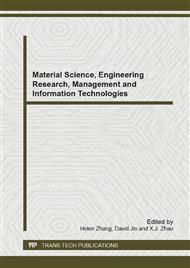p.507
p.511
p.515
p.520
p.525
p.532
p.536
p.541
p.547
Engineering Research with Application of System Dynamics Model of Risk Identification in Railway Construction Project
Abstract:
Firstly, this paper compares the traditional risk identification methods and puts forward a point of view that system dynamics method is a supplement to the traditional risk identification methods. Secondly, we put the railway construction project schedule risk stage for research, establish a system dynamics model, use the software to identify causes of schedule risk in detail, and analyze the system self-regulating effect on schedule risk system. Finally, Using the Wuzhun railway data from Mount Huangshan to Wucaiwan to verify, we can prove the availability of system dynamics model in the railway construction project risk identification.
Info:
Periodical:
Pages:
536-540
Citation:
Online since:
June 2014
Authors:
Price:
Сopyright:
© 2014 Trans Tech Publications Ltd. All Rights Reserved
Share:
Citation:


